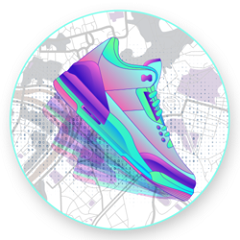${ project.token } (${ project.short_token }) #${ project.rank }
${ project.name }
@${ project.slug }
${ project.price_btc } BTC
Socials
Explorers
${explorer.short}| MarketCap | $ ${ project.market_cap } |
|---|---|
| Volume(24h) | $ ${ project.volume_24 } |
| Circulating Supply | ${ project.circulating_supply } ${ project.short_token } |
| Total Supply | ${ project.total_supply } ${ project.short_token } |
About the project
In 34,000 B.C., there were cave paintings, and that's it. When you came home from a sweltering August day of foraging along the Vézère river, the only form of non-live art or entertainment available was something like the above buffalo.
Today, we live in a world of near infinite choices. This is true not just for art, but for all kinds of things (like potato chips). Since the era of cave art, humanity has incessantly and progressively trended towards interconnected, more efficient, and increasingly transparent markets. This undercurrent of connectedness and openness has affected everything human beings produce.
Nerds like us like to speculate about the end-game of this trend with others on the internet. What will society be like when we have a "Star Trek"-like capacity to instantly and freely replicate anything that exists? The term for this society is post-scarcity1.
Generally, post-scarcity is regarded as fantastical; something that will never happen in our lifetime. Except for one area: digital goods.
Art in the internet age is infinitely reproducible and easily shared. This is a sea change from any prior time in history. Previously, vinyl records captured audio in physical grooves; tapes captured data on magnetic strips; compact disks held digital files read by lasers — in each of these cases physical, medium-specific hardware is required to both produce and recover the bits of data that made up the digital content.
Today art is just data, a string of 1s and 0s, a number, and we no longer need any specialized hardware to decode and enjoy digital content. We use the same technological methods to access a personal photograph a single time as we do to watch a blockbuster on Netflix.
This is a big step forward from the past. As production costs fall to zero, choices go up. Digital distributors provide virtually every song, film, photo or book for purchase and download to any internet enabled device. Technology has decreased the cost of production, too - it has never been easier for aspirant artists to achieve a following through self-publishing.
The digitization of art has added a lot of value to both content creators and consumers, reducing costs and increasing choice. This transition is still in its infancy. With LBRY, we're going to make it a little more mature.









 $48 080.06
$48 080.06
 $3 303.69
$3 303.69